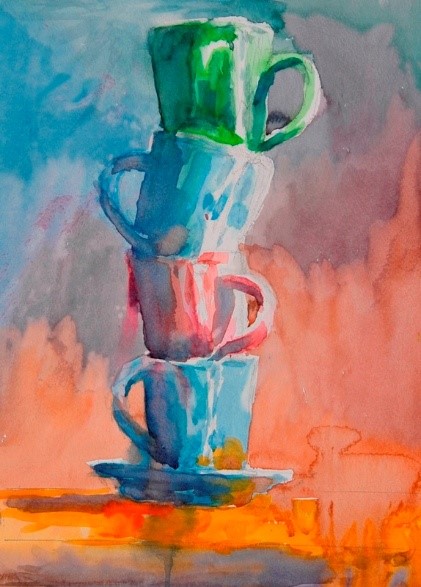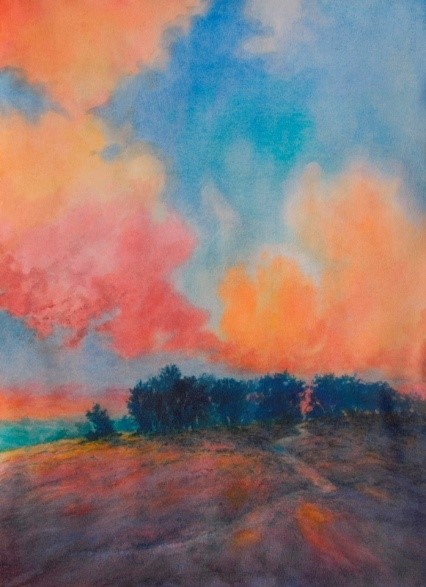Interested in an Original Painting?
Contact Virgil to inquire.
Interested in fine art prints and
more? Shop Fine Art America

“Still Life, No 3”, Watercolor, 11” X 15”
![]() 30 October 2025
30 October 2025
In watercolor painting, the three planes of vision—foreground, middle ground, and background—are fundamental compositional tools that help artists create depth and organize visual information on a flat painted surface. Today we’ll post the first of three interrelated Blog series: “Three Planes of Vision”; “Focal Point/Area of Interest”; and “Creating Depth”.
We begin our series by examining the three planes of vision—foreground, middle ground and background.
The use of the three planes depends on the artist’s intent for the painting and the subject matter chosen. Some paintings, such as portraits, still life, florals, abstracts and nonrepresentational paintings may only use a single plane—often the foreground—while landscapes and cityscapes may typically depend on and use all three planes to tell their stories.


Thus, choice of subject and painterly intent is key in using the planes of vision. For our purposes here, we will assume that all three planes will be used in a landscape painting, to enable us to examine foreground, middle ground and background in a painting.
To create compelling watercolor landscapes and cityscapes, for example, understanding and utilizing the three planes of vision are essential for achieving depth, focus, and visual harmony. Here are some thoughts about approaching the three planes as you plan and execute a painting:
Treat Each Plane Differently According to Subject Matter and Painterly Intent
• Guide the Viewer’s Eye: The plane in which the focal point is located should always be the strongest plane, while the remaining planes act in support, guiding the eye toward the area where the focal point is located. The planes that do not contain the focal point should quietly support the composition, never competing with the focal point and its plane.
• Background: Unless the focal point is in the background, use light washes, soft edges, and muted colors. This creates atmospheric perspective (more below) and ensures the background recedes, providing context and depth without drawing attention.
• Middle Ground: This is a common location for landscape and cityscape focal points. When present, always use higher contrast, bolder colors, and more defined brushwork to draw and retain the viewer’s eye.
• Foreground: If the focal point is not in the foreground, lead the viewer into the painting from a modest foreground and toward the focal point with suggestive shapes, texture and modest detail in the foreground. Remember the focal point and its plane, wherever it is, should be the most powerful area of the painting.
Use Aerial Perspective for Depth
• Typically, decrease contrast, detail, and color saturation as your move to the background. Cooler, lighter colors and softer edges in the background enhance the illusion of distance, however some similar simplification in the foreground may also be considered if the focal point is located elsewhere.


By consciously planning and creating the three planes in your watercolor paintings, you enable a painting that has depth, is organized, and is visually engaging, with a clear focal point or area of interest that attracts and holds the viewer’s attention.
By intentionally designing contrast, placement, and detail hierarchy, in each of the three visual planes, and reviewing them during painting, you ensure the viewer’s eye lands exactly where you intend.
How do you consciously plan and use the three planes in painting?
Contact Virgil to inquire.
more? Shop Fine Art America

“You Must Go Left or Right” , Watercolor, 30” X 11”